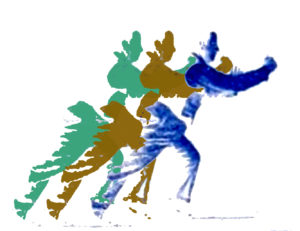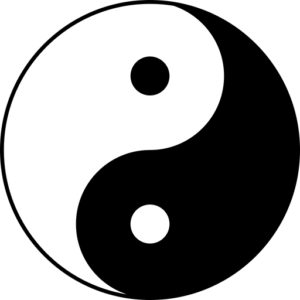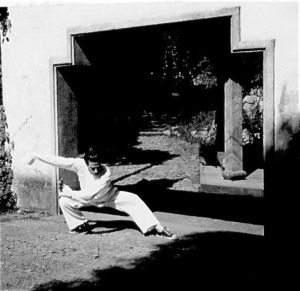Slanted FlyingJournal of Tai Chi Chuan
News
A Rundown Of Tai Chi’s Pain Relief Benefits
Most people who have experienced this ancient Chinese martial art know that it improves balance and strength, giving practitioners a healthy workout with lasting effects. But tai chi first spread in China largely because of its capacity for pain relief, a benefit that is underappreciated by some and forgotten by others.
Tai chi helps people find balance in their minds and bodies, and that is one of the ways to be truly healthy. However, there are some specific health benefits as well, especially with regard to conditions which afflict millions of Americans.
Back Pain
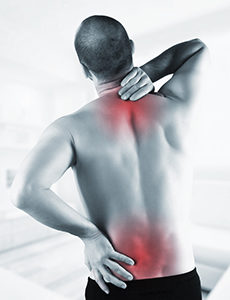 Most people associate tai chi with groups of people in parks who move very slowly in unison. Such controlled movement has some significant benefits for your back. Yoga works wonders for many people, but its lack of movement sometimes prevents dramatic results in terms of back pain. Likewise, running is very good for many people, but the jarring motion can exacerbate back pain instead of relieving it.
Most people associate tai chi with groups of people in parks who move very slowly in unison. Such controlled movement has some significant benefits for your back. Yoga works wonders for many people, but its lack of movement sometimes prevents dramatic results in terms of back pain. Likewise, running is very good for many people, but the jarring motion can exacerbate back pain instead of relieving it.
Moreover, in addition to movement, tai chi promotes good posture. Slouching and rounded shoulders are unhealthy in addition to unattractive. Such a position places undue stress on certain areas of the back. After much practice, tai chi eventually trains the body to correct these issues, thus promoting back health.
This same irregular stress occurs if a person’s everyday movements, such as walking and standing, are not properly aligned. The resulting lack of balance and perception creates a fertile environment for back pain, especially since these movements are so incredibly common. The scientific term for this lack of balance is proprioception, which is essentially a flaw in the body’s inherent position sense. Tai chi often corrects this problem as well, creating a balance where it did not exist before and thus promoting back health.
Poor muscle tone contributes to many back pain issues as well, and tai chi effectively addresses this issue. The slow, controlled movements build core strength, and since these muscles wrap around the spine, stronger abs usually mean better posture. The same thing applies to hamstrings and other muscles which directly support the spine.
Finally, tai chi may alleviate stress-based back pain. Such negative energy almost certainly exacerbates back pain, and may even cause it outright.
Tai chi significantly reduces back pain in many people, even hard-to-treat conditions like sciatica and herniated discs, but almost never alleviate it altogether. So, tai chi is part of a solution as opposed to the entire solution. In combination with massage, cold and heat therapy, topical aids, even pharmacological intervention when necessary, tai chi can play an integral role in a back pain treatment plan. Don’t miss this guide to find the best massage ball for back pain, and combine daily use with a tai chi routine to start seeing results.
Chronic Pain
The movement/inner peace combination is often effective against chronic pain as well. Shifting mental focus away from discomfort and towards something productive often alleviates pain, and it can be several hours before pain signals from nerve endings regain their prior intensity. Meanwhile, the slow motion is very good for achy joints. Some specific examples include:
- Osteoporosis: Many researchers are very encouraged by the substantial evidence that tai chi maintains bone density among post-menopausal women, and may even increase it, so they plan to conduct further and more extensive studies.
- Fibromyalgia: Little is known about this disease which creates chronic pain which, in many cases, is almost unbearable. According to one study, when fibromyalgia patients practiced tai chi, they reaped a number of benefits, such as better sleep, less pain, less emotional distress, and better mobility.
- Osteoarthritis: This same dynamic helps osteoarthritis patients. These individuals also benefit from the aforementioned movement and mental distraction.
Once again, tai chi is probably not a magic bullet. For the best chronic pain relief, combine this exercise with other treatments that your doctor recommends.
Stress Relief
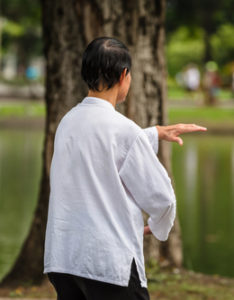 The physical benefits of tai chi often emerge after several months of sustained practice, but the stress relief benefits are often apparent almost immediately. The stretching-and-releasing motion promotes physical relaxation. As a bonus, the tools learned in tai chi may be effective during those parts of the day when stress levels are at their highest. Furthermore, the deep breathing and soft commands from the instructor promote mental relaxation, extending stress relief even further in many cases.
The physical benefits of tai chi often emerge after several months of sustained practice, but the stress relief benefits are often apparent almost immediately. The stretching-and-releasing motion promotes physical relaxation. As a bonus, the tools learned in tai chi may be effective during those parts of the day when stress levels are at their highest. Furthermore, the deep breathing and soft commands from the instructor promote mental relaxation, extending stress relief even further in many cases.
Getting started is one of the most difficult parts of tai chi because it is so unlike most other Western pain relief methods. But tai chi is an evidence-based pain relief method, and if you suffer from stress or chronic physical pain, almost anything is worth a try if it might possibly break the grip of pain.




